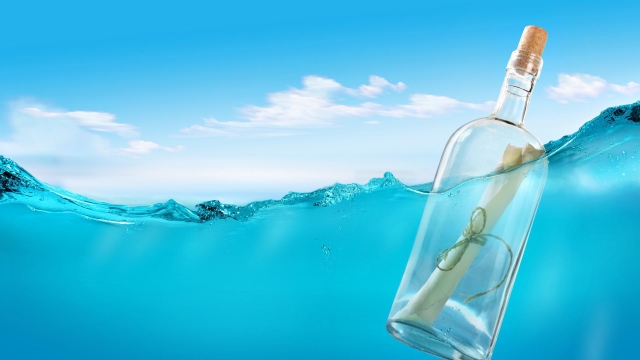Whisky, often referred to as "liquid gold," has captivated people around the world for centuries with its rich history, complex flavors, and timeless allure. From the rolling green hills of Scotland to the rugged landscapes of Kentucky, the enchanting realm of whisky draws both connoisseurs and curious adventurers alike into its transformative embrace.
Steeped in tradition and crafted with meticulous attention to detail, whisky embodies the artistry of the master distillers who have perfected their craft over generations. Each golden drop tells a story, with every sip taking us on a journey through time and terroir. Whether it’s the smoky peatiness of an Islay malt or the smooth sweetness of a bourbon, whisky has the power to transport us to far-flung corners of the globe, evoking sensations that awaken the senses and ignite the imagination.
Beyond its captivating taste, whisky serves as a symbol of celebration, reflection, and connection. It brings people together, fostering moments of camaraderie and shared experiences. From a heartfelt toast at a wedding to an intimate gathering by a crackling fireplace, whisky has a way of creating memories that linger long after the last drop has been savored.
In the following article, we will delve into the multifaceted world of whisky, exploring its storied origins, the intricate art of distillation, and the diverse array of styles and flavors that delight aficionados worldwide. So sit back, pour yourself a dram, and embark on a journey of discovery as we unlock the secrets and dive deep into the enchanting realm of this golden elixir – whisky.
History and Origins
Whisky, also known as the "water of life," has a rich and fascinating history that dates back centuries. Its origins can be traced to ancient times, where the art of distilling spirits was first discovered. The exact birthplace of whisky is still a topic of debate among historians, but many believe it originated in either Scotland or Ireland.
The history of whisky is intertwined with the monks of medieval times, who were renowned for their distilling skills. They used the process of distillation to create potent elixirs for medicinal purposes. As the centuries passed, the art of distillation spread throughout Europe, and whisky began to take on various forms and flavors.
Scotland, with its vast landscapes and abundant resources, played a significant role in shaping the modern whisky we know today. It is believed that Scottish immigrants brought their knowledge of whisky distillation to countries like Canada and the United States, where the spirit flourished even more.
Over time, different regions developed their distinct whisky styles. In Scotland, for example, the peaty and smoky flavors of Islay whiskies gained popularity, while Irish whiskies were known for their smooth and light character. The United States became renowned for its bourbon whiskey, made primarily from corn and aged in charred oak barrels.
Today, whisky has evolved into a truly global phenomenon, with distilleries popping up in countries around the world. Each region brings its unique touch and flavor profiles to the spirit, adding to its diversity and allure. Whether you prefer a peaty Scotch, a smooth Irish whiskey, or an adventurous Japanese whisky, there is a world of liquid gold waiting to be explored.
Production Process
Whisky production involves a meticulous process that combines artistry and science to create the golden elixir we all know and love. From the careful selection of ingredients to the patient aging process, every step is crucial in crafting the perfect whisky.
At its core, the production process of whisky involves three main stages: malting, fermentation, and distillation. Let’s delve into each of them to uncover the magic behind this captivating spirit.
Firstly, the malting stage sets the foundation for the whisky’s flavor profile. Barley, the primary grain used in whisky production, is soaked in water and allowed to germinate. This activates enzymes within the barley that convert starches into fermentable sugars. The germinated barley is then dried in kilns, with the degree of peat smoke used during this process influencing the whisky’s smokiness.
Next, the fermented stage transforms the sugars into alcohol through the process of fermentation. The malted barley is ground into a coarse flour called grist, which is mixed with hot water in a vessel known as a mash tun. The hot water activates enzymes in the grist, further breaking down the starches into sugars. This sugary liquid, known as wort, is then transferred to fermentation vessels where yeast is added. Over several days, the yeast ferments the sugars into alcohol, resulting in a liquid known as wash.
The final critical stage is distillation, where the wash is transformed into whisky. The wash is transferred to large copper stills, where it is heated. The wash is heated until the alcohol vaporizes, rising through the stills and condensing into liquid form once again. This process is carried out in two rounds of distillation, with the second round often occurring in smaller stills known as spirit stills. The distillate that is collected from this process, known as new make spirit, is then transferred to oak barrels for aging, where it will develop its complexity and character over time.
By closely following the production process, distilleries around the world are able to create an astonishing array of whisky flavors, ranging from light and fruity to rich and smoky. Each step in this enchanting realm of whisky production leaves its mark on the final product, offering a unique sensory experience that whiskey enthusiasts can appreciate.
Tasting and Appreciation
In the world of whisky, tasting and appreciation go hand in hand. With its rich and complex flavors, whisky offers a sensory experience like no other. From the moment the golden liquid touches your lips, a journey begins, taking you deep into the heart of this enchanting realm.

As you take your first sip, your taste buds awaken to a symphony of flavors. The intricate dance of sweetness, smokiness, and spice unfolds on your palate, leaving a lingering warmth that tantalizes the senses. Each sip reveals new layers of complexity, inviting you to savor and explore the nuances of this liquid gold.
To truly appreciate whisky, it is essential to engage all your senses. Take a moment to observe its color, ranging from pale straw to rich amber hues. The way it glistens in the light can give you a hint of what lies within. Breathe in its aroma, allowing the delicate notes of fruit, caramel, or oak to transport you to distant landscapes and forgotten memories.
When tasting whisky, it’s important to take your time and let the flavors unfold. Allow the liquid to coat your mouth, exploring the different sensations it evokes. Notice the smoothness or the intensity, the balance or the complexity. With each sip, you become a part of the whisky’s story, experiencing its depth and character.
Whisky tasting is a journey of discovery. Whether you are a seasoned whisky connoisseur or a curious newcomer, the world of whisky offers endless possibilities for exploration and enjoyment. So, raise your glass, and venture into the mesmerizing realm of liquid gold, where every sip is a voyage of the senses.



